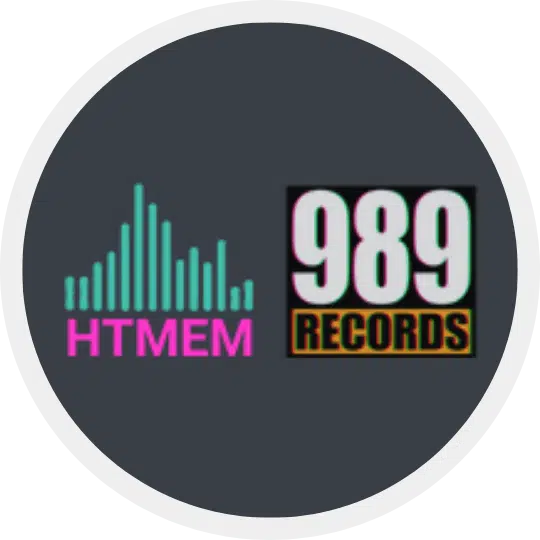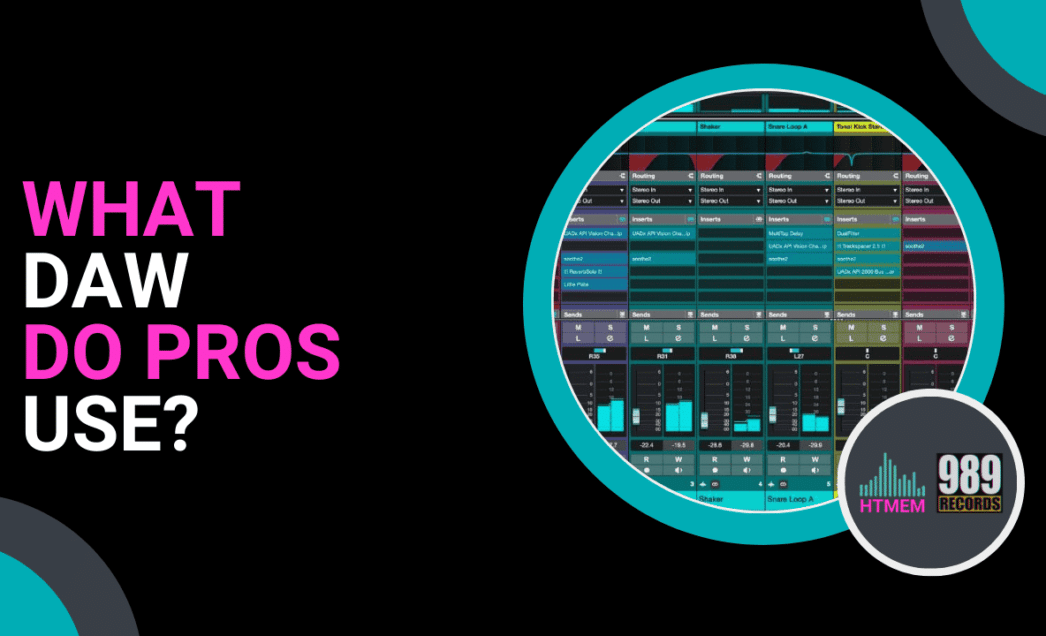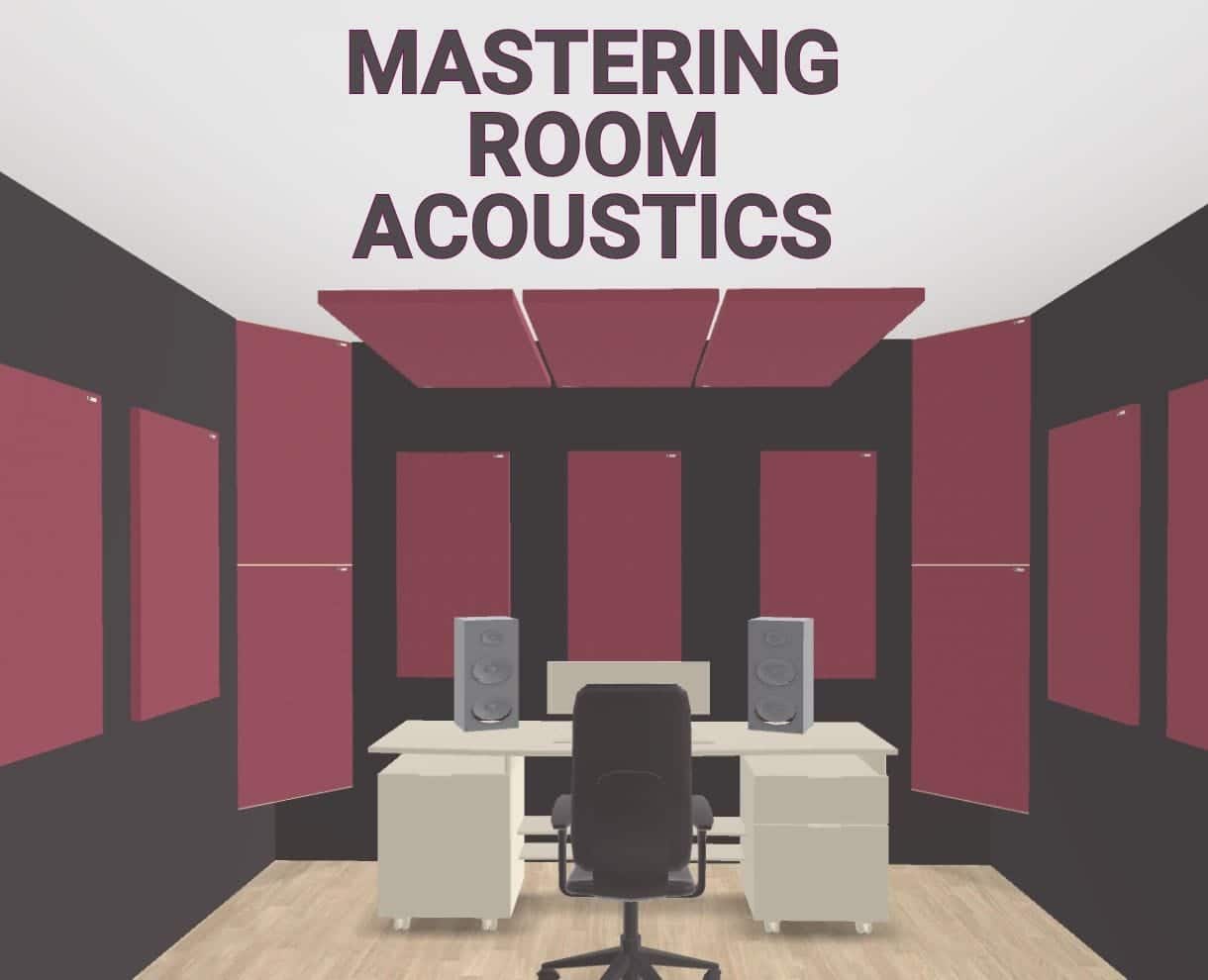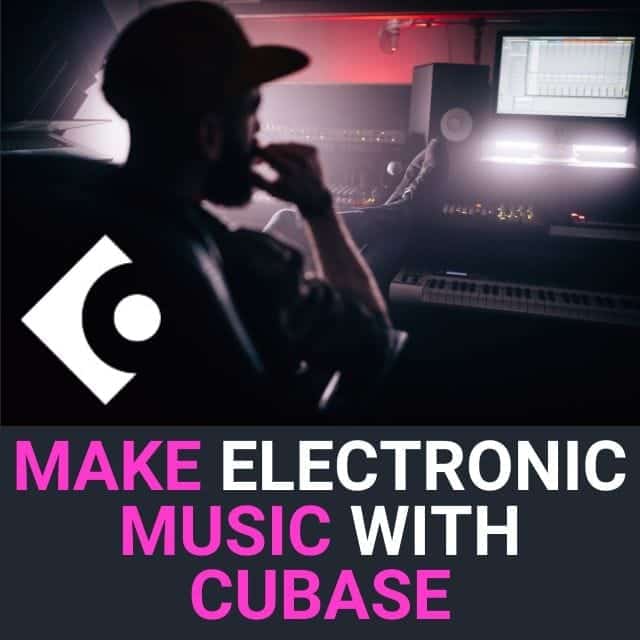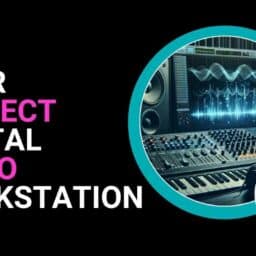Introduction to Digital Audio Workstations
What is a DAW and its Importance in Music Production
A Digital Audio Workstation (DAW) is a software application used by music producers to record, edit, and produce audio tracks. These powerful tools are integral to the music production process, enabling users to create complex arrangements and professional-quality audio recordings.
A DAW provides various tools and features for manipulating sound, including recording multiple audio tracks simultaneously, applying effects and filters, and mixing and mastering tracks. With advanced features like MIDI editing, virtual instruments, and customizable user interfaces, DAWs cater to a wide range of music production needs.
DAWs are essential for music production, allowing professionals to create high-quality audio recordings and produce music efficiently.
So, if you’re a beginner music producer, the right DAW can enhance your creative process and help you produce music that stands out.
Historical Evolution of DAWs
The concept of digital audio workstations (DAWs) has been around for several decades, with the first DAWs emerging in the 1970s and 1980s.
To quench your curiosity, Steinberg Cubase, introduced in 1989 for Atari ST computers, holds the distinction of being the first MIDI sequencer.
The first digital audio workstations (DAWs) were primarily designed for MIDI editing and were often constrained by the technological limitations of their era.
Later on, DAWs began to become more widely available and user-friendly. These programs allowed music producers to record, edit, and mix audio tracks with greater ease and precision.
The 2000s saw the rise of digital audio workstations specifically designed for electronic music production, such as Ableton Live and FL Studio. These programs introduced new features such as live performance capabilities and advanced MIDI editing features, which revolutionized the way electronic music was created and performed.
Today, DAWs continue to evolve and improve, with new features and technologies being introduced regularly. Many DAWs now offer advanced features such as AI-powered audio editing and virtual instruments, making it easier than ever for music producers to create high-quality music.
Top DAWs for Music Production
Let’s take a closer look at the DAWs available on the market, highlighting their key features and functionalities.
🔥 Steinberg Cubase: Best Versatile and Professional-Grade DAW
Cubase is one of the most time-tested digital audio workstations, well-regarded by both beginners and professionals. It offers a comprehensive suite of tools for composing, recording, editing, and mixing audio. Cubase shines in its versatility, catering to a wide range of music genres—from orchestral compositions to electronic productions.
Cubase includes powerful MIDI editing tools, advanced audio warping capabilities, a rich library of sounds, and seamless integration with external hardware and plugins. With its professional-grade features and intuitive design, Cubase is ideal for producers looking to handle any music production task with precision and efficiency.
If you’re looking to master Cubase and simplify the learning process, check out the course I personally designed here.
🎤 Ableton Live: Best for Live Performance and Electronic Music
Ableton Live is a popular DAW among electronic music producers and live performers. It offers a unique session view, allowing users to trigger and manipulate loops and samples in real-time.
This feature makes Ableton Live particularly suitable for live performances, enabling music creators to produce music on the fly.
Ableton Live provides advanced MIDI editing features, making it ideal for live performances and electronic music production. Its intuitive interface and powerful tools make it a favorite among electronic music producers looking to create music with ease and flexibility.
💿 Logic Pro: Best All-Around DAW for Recording and Editing Audio Tracks
Logic Pro is a professional-grade DAW developed by Apple, known as Logic Pro X on macOS, known for its comprehensive set of features for recording, editing, and mixing audio tracks.
With a user-friendly interface and an extensive library of high-quality virtual instruments, Logic Pro is suitable for professional music producers and those looking to create complex arrangements.
Logic Pro offers advanced features and a user-friendly interface, making it an excellent choice for both beginners and experienced producers. Its integration with macOS ensures seamless performance, and its built-in virtual instruments and effects provide a complete toolkit for music production.
🍓 FL Studio: Best DAW for Beat Makers and Hip-Hop Producers
FL Studio is a popular DAW among hip-hop producers and beat makers. FL Studio’s distinct workflow, user-friendly features, pattern-based step sequencer, and intuitive piano roll editor streamline the music creation process, making it accessible for beginners while offering tools for more experienced users.
It offers a user-friendly interface and a range of features for music production, including a step sequencer and pattern-based approach. FL Studio’s extensive library of virtual instruments and effects makes it ideal for creating beats and hip-hop tracks.
FL Studio is known for its ability to produce music with a focus on beat making and electronic music production. Its intuitive interface and creative tools make it a go-to choice for music producers looking to craft unique and engaging tracks.
🎛 Pro Tools: Industry-Standard for Professional Recording Studios
Pro Tools is a professional-grade DAW widely used in recording studios. It offers advanced features for audio recording, editing, and mixing, making it an industry-standard for professional music producers. Pro Tools is ideal for professional recording studios, providing a comprehensive set of tools for music production.
Pro Tools is renowned for its audio processing capabilities and mastering tools, making it a preferred choice for audio engineering and producing music in a professional recording studio environment. Its compatibility with a range of audio interfaces ensures seamless integration into any studio setup.
🥁 GarageBand: Best DAW for Beginners and Hobbyists
GarageBand is a free DAW developed by Apple, offering a simple and intuitive interface and a range of features for music production. It is ideal for beginner music producers and hobbyists who want to create music without investing in a professional-grade DAW.
GarageBand’s basic features and built-in virtual instruments make it a great starting point for those new to music production. Its user-friendly interface allows users to produce music with ease, making it a popular choice for learning the basics of audio recording and editing.
🔉 Bitwig Studio: Best DAW for Sound Design and Experimental Music
Bitwig Studio is a professional-grade DAW developed by Bitwig, offering advanced features for sound design and experimental music production.
With a modular environment and a range of virtual instruments and effects, Bitwig Studio is ideal for music producers who want to create unique and experimental sounds.
Bitwig’s customizable user interface and powerful tools make it a favorite among sound designers and electronic music producers looking to push the boundaries of music creation. Its innovative workflow and creative tools enable users to produce music with a focus on experimentation and innovation.
Emerging DAWs
As technology continues to advance, new digital audio workstations are emerging that offer innovative features and capabilities.
Some of the emerging DAWs include:
- Reason Studios: A DAW that specializes in virtual instruments and effects, and offers a unique modular environment for creating custom signal chains.
- Reaper: A budget-friendly DAW that offers advanced features such as customizable interfaces and advanced MIDI editing capabilities.
- Bitwig Studio: A professional DAW that offers advanced features such as modular routing and a vast library of virtual instruments.
These emerging DAWs are changing the way music producers create and perform music, and are offering new opportunities for creativity and innovation.
Highlighting New and Innovative DAWs
Some of the new and innovative DAWs that are making waves in the music production industry include:
- FL Studio: Offers advanced features such as sidechaining and frequency splitting, providing music producers with more control over their audio tracks.
- Ableton Live: Introducing advanced features such as comping and linked-track editing, enhancing the workflow for electronic music production and live performances.
- Logic Pro X’s new “Live Loops”: This feature allows for real-time composition and performance, making it easier for music producers to experiment with different sounds and arrangements on the fly.
These new and innovative DAWs are offering music producers new ways to create and perform music, and are pushing the boundaries of what is possible in music production.
Cubase offers all the features mentioned above and is widely regarded as one of the most comprehensive digital audio workstations for music production. If you’re passionate about music and eager to start creating with Cubase, I highly recommend checking out the dedicated course I’ve developed on Udemy.
Choosing the Right DAW
Factors to Consider When Selecting a DAW
When choosing a digital audio workstation, consider compatibility with your equipment and software. Feature availability, user interface and workflow, learning resource availability, and price are also important considerations. Ensure the DAW meets your specific needs and preferences to optimize your music production process.
Comparison Table
| DAW | Key Features | Ideal Users | Unique Strengths |
|---|---|---|---|
| Steinberg Cubase – Learn it Now | Comprehensive suite for composing, recording, editing, and mixing; advanced MIDI tools; rich library of sounds; audio warping; seamless hardware/plugin integration. | Producers across all genres, professionals | Versatility for a wide range of tasks, professional-grade tools for detailed music production. |
| Ableton Live | Unique session view for real-time loop/sampling; advanced MIDI editing; intuitive interface; ideal for live performances and electronic music production. | Live performers, electronic music producers | Real-time music creation, flexibility for live performances, and electronic music focus. |
| Logic Pro | Comprehensive recording and editing features; vast library of high-quality virtual instruments; powerful macOS integration; user-friendly interface. | All-around producers, especially Apple users | Seamless macOS integration, high-quality virtual instruments, simplicity combined with advanced features. |
| FL Studio | Step sequencer, pattern-based workflow; extensive library of virtual instruments; creative tools for beats and loops; user-friendly interface tailored for beginners and beat makers. | Hip-hop producers, beat makers | Beat-centric workflow with an emphasis on intuitive and efficient beat creation. |
| Pro Tools | Industry-standard features for audio recording, editing, and mixing; advanced mastering tools; unmatched audio processing capabilities; wide hardware compatibility. | Professional recording engineers, studios | Precision audio editing, exceptional mastering tools, seamless studio hardware integration. |
| GarageBand | Free and beginner-friendly; easy-to-learn interface; built-in virtual instruments; basic music recording and editing features. | Beginners, hobbyists | Simplicity, no cost barrier, and a perfect entry point for learning music production basics. |
| Bitwig Studio | Modular system for sound design; customizable interface; rich virtual instruments and effects; innovative workflow ideal for experimental music production. | Experimental producers, sound designers | Focus on pushing creative boundaries through its modular environment and innovation-driven features. |
Hardware and Plugin Compatibility
Ensuring Smooth Workflow with Compatible Hardware and Plugins
Hardware compatibility is crucial when choosing a DAW. Check the DAW’s compatibility with your computer’s operating system and ensure your computer meets the system requirements. Verify that any hardware you plan to use (e.g., audio interfaces, MIDI controllers) is compatible with the DAW to ensure a seamless workflow.
Workflow and Productivity
Optimizing Your Workflow with a DAW
A DAW’s workflow can significantly impact your productivity and creativity. Choose a DAW that offers a user-friendly interface and a workflow that suits your needs. Utilize the DAW’s features and tools to optimize your workflow and create music efficiently, enabling you to focus on the creative aspects of music production.
Free Trials and Demos
Testing DAWs Before Committing
Utilize free trials to test out multiple DAWs and determine which one best fits your needs. Approach each DAW with an open mind and invest time in learning the basics. Assess the DAW’s workflow, interface, and features to make an informed decision, ensuring you choose a DAW that aligns with your music production goals.
Steinberg Cubase offers a free 60-day trial—make the most of it!
User Community and Support
Having a strong user community and support network is essential for music producers who use digital audio workstations. Many DAWs offer online forums and communities where users can share tips and advice, and get help with any issues they may be experiencing.
Some of the ways that DAWs offer user community and support include:
- Online forums: Many DAWs offer online forums where users can ask questions and share tips and advice.
- Social media groups: Many DAWs have social media groups where users can connect and share information.
- Tutorials and documentation: Many DAWs offer tutorials and documentation to help users learn how to use the software.
- Customer support: Many DAWs offer customer support teams that can help users with any issues they may be experiencing.
Having a strong user community and support network is essential for music producers who use digital audio workstations, and can help to ensure that they get the most out of their software.
Or, take advantage of the Q&A board for the Cubase Course I created and published on Udemy. It’s the perfect place to ask your questions whenever you encounter any doubts or need clarification. Have a look at the course page here.
Importance of Community Resources and Support Networks
Community resources and support networks play a crucial role in the success of music producers using digital audio workstations. These resources provide valuable insights, troubleshooting tips, and creative inspiration. Being part of a supportive community can help music producers stay updated with the latest trends and techniques, and foster a collaborative environment where ideas can be shared and developed. Whether through online forums, social media groups, or official customer support, having access to a robust support network can significantly enhance the music production experience.
Conclusion
Recap of Top DAWs for Music Production
The top DAWs for music production include Cubase, Ableton Live, Logic Pro, FL Studio, Pro Tools, GarageBand, and Bitwig Studio. Each DAW offers unique features and tools, making them suitable for different music production needs. Choose a DAW that meets your specific needs and preferences, and utilize its features and tools to create high-quality music.
So, if you’re producing pop music, electronic music, or orchestral compositions, the right DAW can enhance your creative process and help you produce music that stands out. Explore the world’s most popular DAWs and discover the best digital audio workstation for your music production needs.
Suggested Reading
Discover the Best Online Recording Studio with Autotune Options
Practice and Enjoy!
